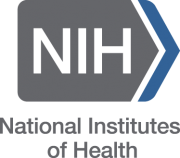Posted on January 30, 2019
Source: NIAID

"Scientists funded by the National Institutes of Health have developed a new assay to accurately and easily count the cells that comprise the HIV reservoir, the stubborn obstacle to an HIV cure. This advance will enable researchers who are trying to eliminate the HIV reservoir to clearly understand whether their strategies are working. The research was supported by the National Institute of Allergy and Infectious Diseases (NIAID), part of NIH.
The HIV reservoir consists of infected cells containing DNA molecules that encode HIV proteins. These cells have entered a resting state in which they do not produce any parts of the virus. Scientists have found that the HIV DNA—or “provirus”—inside resting cells is usually so defective that it cannot generate new virus particles. However, most available tools to measure the HIV reservoir cannot distinguish intact proviruses, which can replicate themselves, from the vast excess of defective proviruses.
A team led by Robert F. Siliciano, M.D., at Johns Hopkins University School of Medicine analyzed DNA sequences from more than 400 HIV proviruses taken from 28 people with HIV."